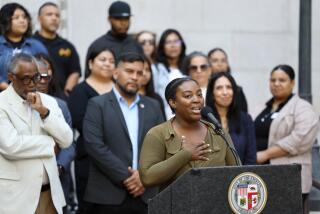These L.A. residents got $1,000 a month. What happened after the cash stopped?
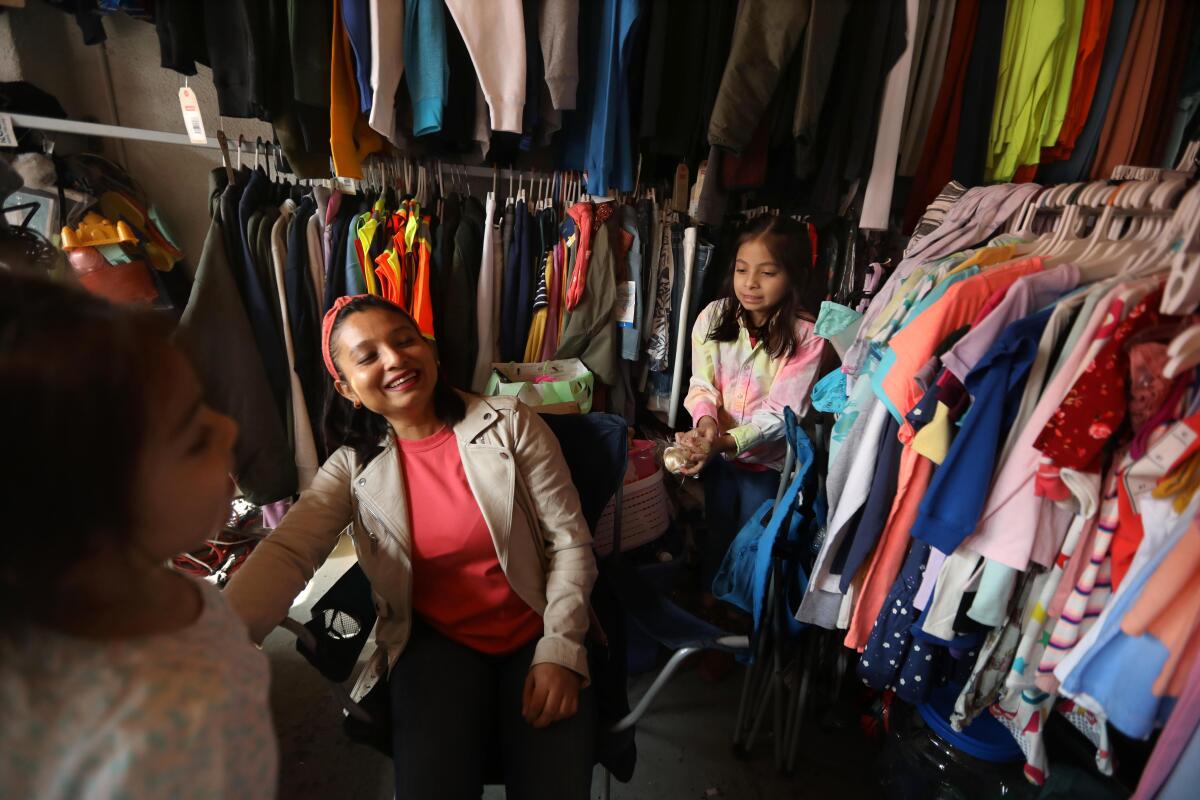
Claudia Gutiérrez Muñoz worked at El Pollo Loco for more than two decades, raising six children.
The restaurant closed at the start of the pandemic, and then only the drive-through reopened. Her hours were reduced around the same time that her building was being sold, and she needed to find a new place to live.
The chaotic situation left the single mother with anxiety and vertigo. Then, a safety net appeared.
In January 2022, Gutiérrez Muñoz started receiving $1,000 a month through the city of Los Angeles’ guaranteed-income pilot program. She saved the money for several months and used it for the deposit on her new apartment.
“I’m going to be grateful for this program my whole life,” said Gutiérrez Muñoz, a 52-year-old immigrant from Mexico who makes $17 an hour at the restaurant. “The truth is, for me, it was more than a blessing. It gave me the peace of being able to provide … a secure roof for my children.”
Basic Income Guaranteed: Los Angeles Economic Assistance Pilot, or BIG:LEAP, disbursed $38.4 million of city funds to 3,200 residents who were pregnant or had at least one child, lived at or below the federal poverty level and experienced hardship related to COVID-19.
They received monthly cash deposits for 12 months and could use the money however they saw fit.
In a city with extreme economic inequality, what happens after a guaranteed-income pilot program ends?
‘Gave me a huge part of my life back’
Ashley Davis was in survival mode.
She was juggling a part-time job in marketing and a side hustle as a freelance cosmetologist while raising a son with special needs. What with work, traveling to clients’ homes to do hair and makeup and taking her son to therapy, the single mother only had time to focus on the necessities.
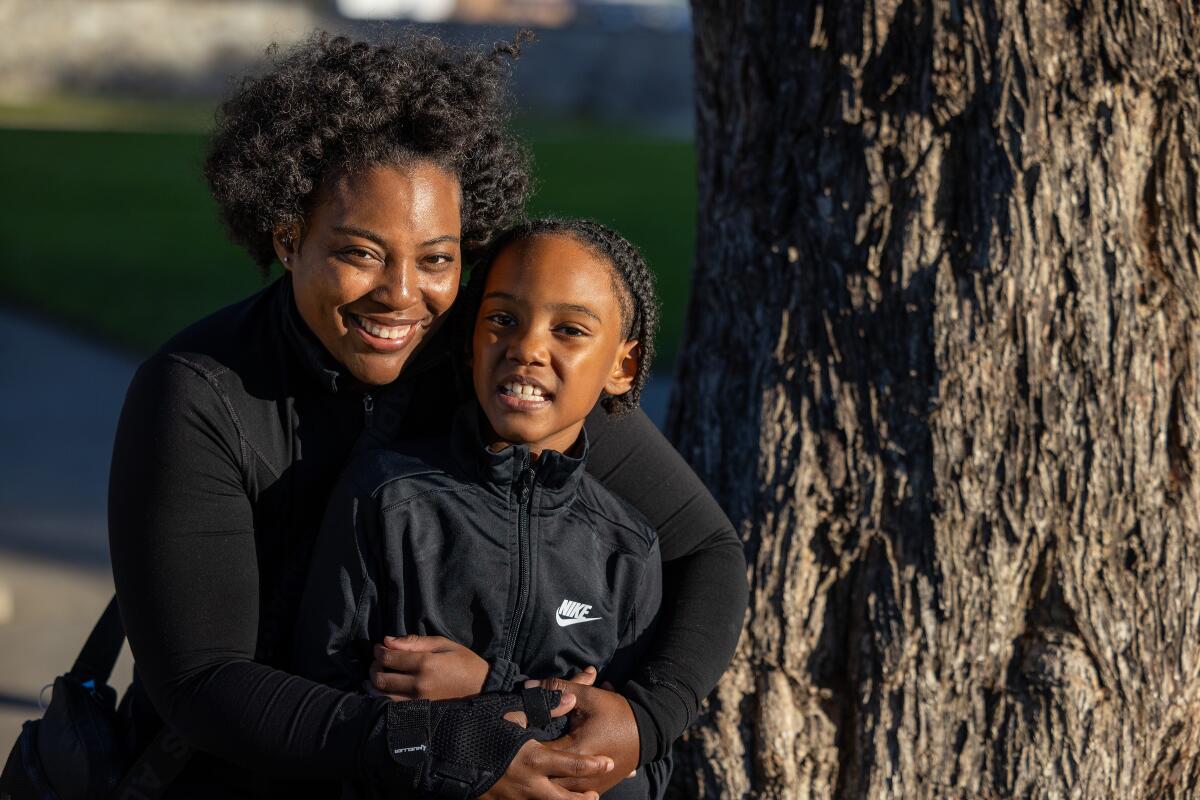
“I didn’t realize how stressed out and depressed I was,” said Davis, now 36. “I was gaining weight. My health was taking a toll.”
She cried when she found out she would be receiving $1,000 a month.
Within a week of the first payment, Davis enrolled in an online chemistry course — the first of several prerequisites to apply to nursing school.
She put the BIG:LEAP money toward her monthly bills, including her portion of the rent — about $1,200 including utilities — for the home in the Harbor Gateway neighborhood she shares with her son, mother and little brother.
She bought clothes and shoes for her son, now 7, as well as small luxuries like annual passes to Legoland and a high-quality juicer.
The money also helped defray unexpected expenses — a $1,200 car repair, a $75 fee for course materials.
Nearly a year after receiving her last payment, Davis is still doing hair and makeup. She has finished all the courses she needs to apply to nursing school.
She has lost weight, and her cholesterol and blood sugar levels are stabilizing. Now, when she starts stressing about money, she does “a little self-checking,” reminding herself that payments from clients will soon be coming in.
“Being in that program, it definitely gave me a huge part of my life back,” she said. “It gave me some time back. It gave me energy. It gave me some tools to take care of myself, because if I can’t take care of myself, I can’t take care of my child.”
‘The best thing to do was to invest the money’
Until recently, Martha López Dubón stayed at home in South L.A. with her two daughters. The family survived on her partner’s income from a company that manufactured wheels.
At times, López Dubón didn’t have enough money to go to the laundromat or put gas in the car. Sometimes, she couldn’t even afford an ice cream for the girls. López Dubón, a 39-year-old immigrant from Honduras, would wonder: “How is it possible that I’m in this country and I don’t have even one dollar in my pocket?”
López Dubón had studied marketing in Honduras and always wanted her own business. So when the pandemic hit and her partner lost his job, López Dubón got to work.
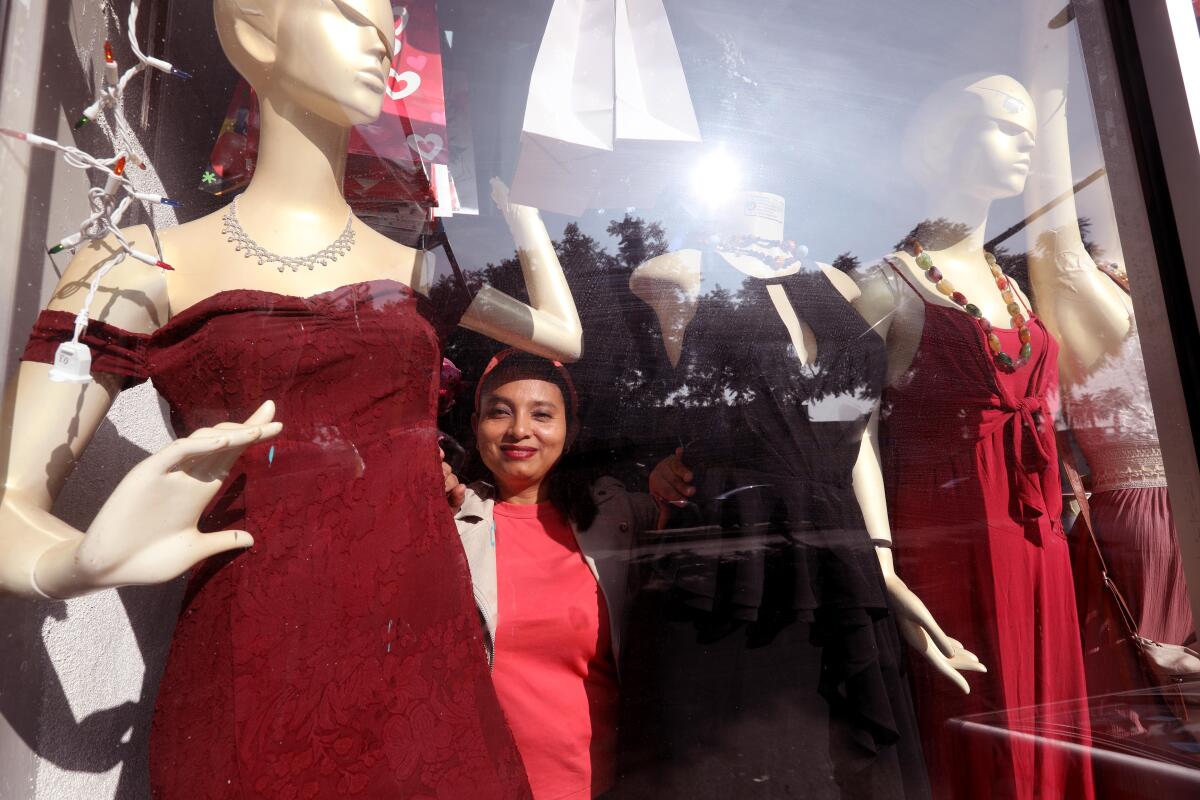
Each weekend, she popped up a tent on the sidewalk, lugging heavy plastic boxes of clothing and packing them up at the end of the day. She endured wet days that soaked her wares, as well as verbal threats from passersby.
Still, business was promising. So when López Dubón started receiving the $1,000 payments in April 2022, she dedicated half toward their $1,035 rent and the other half to her business.
“I thought about it and realized that the best thing to do was to invest the money, not spend it,” López Dubón said. “Spending it is easy, but what’s going to happen after a year? I’m going to be in the same situation I was before.”
With clothing piling up in her apartment, she found a small storefront for $1,200 a month. Last February, she celebrated the grand opening of the Dubón Store.
Nearly a year later, she can afford gas. She travels with her daughters, ages 6 and 9, to the mountains or the desert, where they stay in hotels and try new foods.
Unconditional cash ‘smooths that income volatility’
Proponents tout unconditional cash as a way to provide greater stability to vulnerable community members. They say the programs can change narratives around poverty by entrusting low-income people to make decisions about their own finances.
Critics of a related proposal — universal basic income, which would provide a cash benefit to all Americans — question the political feasibility of grants that aren’t tied to work requirements, and whether the funding would come at the expense of existing food and health programs.
BIG:LEAP was one of the largest of about 150 guaranteed-income pilot programs launched nationwide in recent years, in response to the pandemic, racial injustice and widening economic inequality.
The L.A. participants were randomly selected from about 50,000 applicants. Their average age was 38, and they had an average of two kids, with a median household income of about $11,000. Nearly 80% were female, and about 65% were single. Nearly 50% were Latino, and nearly 30% were Black.
So far, studies on similar programs are “indicating pretty uniformly positive impacts on health, belonging, self-worth, among other outcomes,” said Sean Kline, director of the Stanford Basic Income Lab.
A recent report on a St. Paul, Minn., program from the Center for Guaranteed Income Research at the University of Pennsylvania found that the proportion of people who were employed increased and continued to rise six months after the program ended. People felt more hopeful about the future, and those feelings remained six months after.
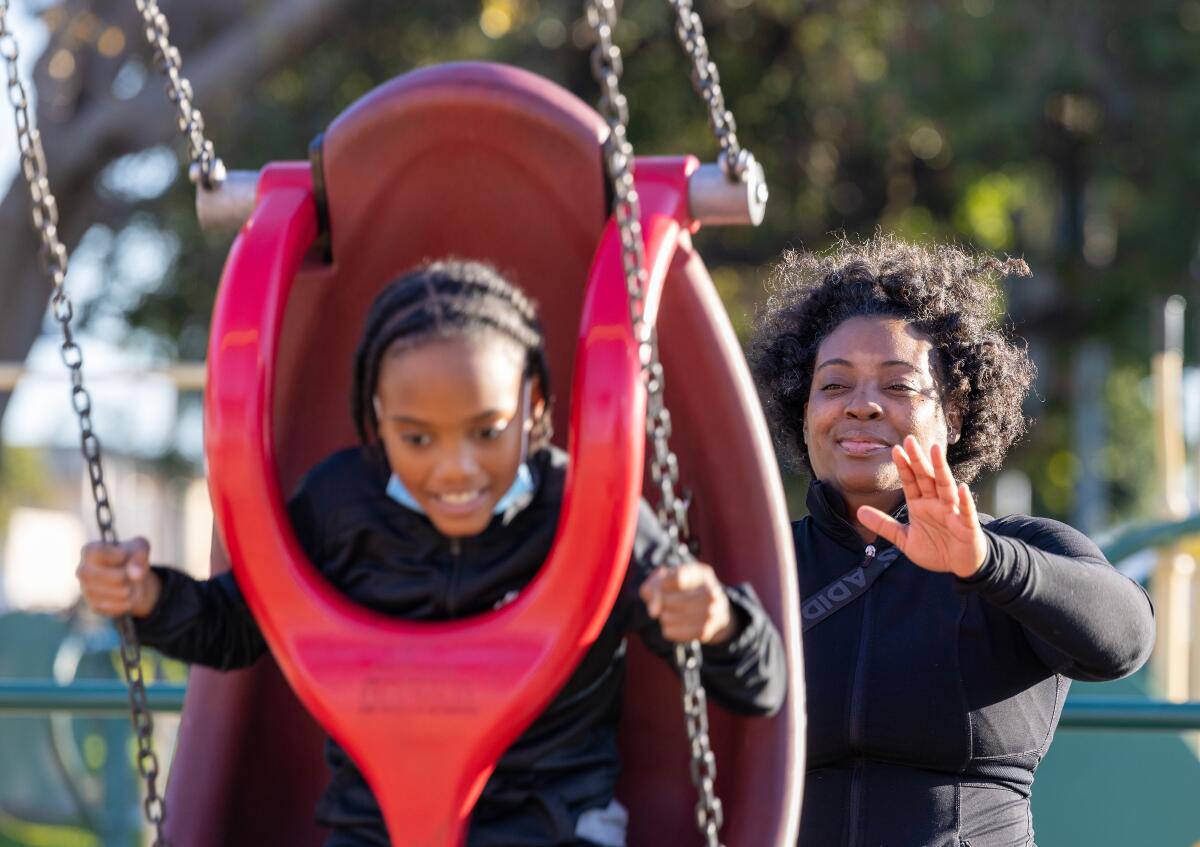
But many see their finances drop back to previous levels, said Amy Beth Castro, co-founder and faculty director of the Center for Guaranteed Income Research, which is also studying BIG:LEAP and more than 30 other programs. Participants who do achieve a measure of economic mobility, she said, are those who already had concrete goals or plans.
“What happens with guaranteed income is that it smooths that income volatility ... and it creates predictability,” Castro said. “When you have that floor, that scarcity starts to go away. And we know that it calms the mind, it calms the spirit, and it creates space for people to reimagine an alternative future, or to maybe take steps toward a goal that they’ve always had but have not been able to actualize.”
Abigail Marquez, general manager of L.A.’s Community Investment for Families Department, which ran BIG:LEAP, called guaranteed income “one effective strategy” for ending generational poverty in L.A. Such programs must be paired with workforce development, economic development and housing strategies, she said.
Marquez said she would like to launch another guaranteed-income program, and hopes it will be discussed during the city’s upcoming budget hearings.
‘You see a little bit of light up ahead’
With an additional $1,000 a month, Gutiérrez Muñoz could pay her portion of the $2,795 rent for the three-bedroom apartment she shares with her two teenagers, her 25-year-old daughter and the daughter’s family. She could take her kids shopping for clothes and eat soup at their favorite Thai restaurant once a week.
“It was like when you’re in a dark place and you see a little bit of light up ahead — that was the program for me,” she said.
Now, she can barely pay the bills, especially when her hours are inconsistent. Dinner is sometimes discounted plates of chicken and macaroni from the El Pollo Loco where she works.
For several months this year, she was late on the rent. At one point, she considered living in her car.
“I can’t spend one whole paycheck on rent if I also have to buy food and provide hygiene products and things for the house,” she said. “I haven’t been able to give them the luxury of going out to eat or buying things, like a pair of shoes now and then.”
Gutiérrez Muñoz takes it day by day and tries not to get stressed.
“If I get sick, then I can’t work, and if I can’t work, it’s one less income in my house,” she said.
This article is part of The Times’ equity reporting initiative, focusing on the challenges facing low-income workers and efforts being made to address the economic divide in California. More information about the initiative and its funder, the James Irvine Foundation, can be found here.
More to Read
Sign up for Essential California
The most important California stories and recommendations in your inbox every morning.
You may occasionally receive promotional content from the Los Angeles Times.

